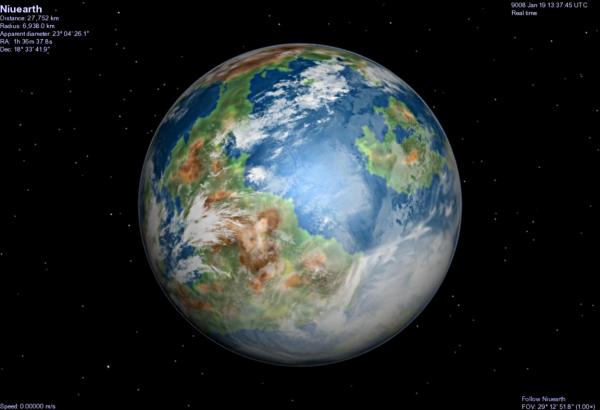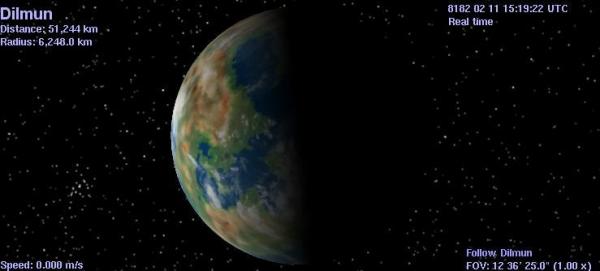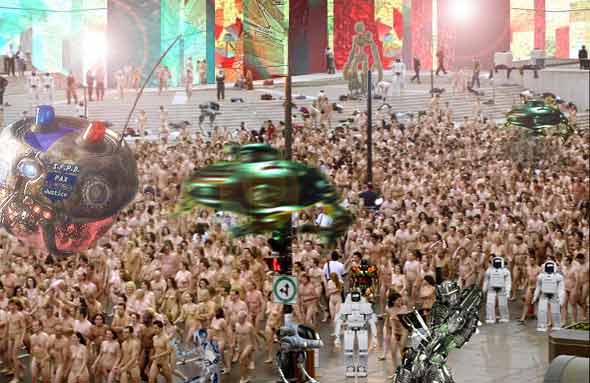BY LETTER
Metasoft Baseline Reserves
Sophonts > Modosophonts > Baseline Human
Galactography > Sephirotic Empires > Metasoft Version Tree
Galactography > Regions of Space > Middle Regions/Hinter-regions
Galactography > Systems and Worlds > Systems & Worlds M - N
Galactography > Sephirotic Empires > Metasoft Version Tree
Galactography > Regions of Space > Middle Regions/Hinter-regions
Galactography > Systems and Worlds > Systems & Worlds M - N
Reservations in the Metasoft rimward sector dedicated to preserving human baseline culture
The Metasoft Version Tree has a long tradition of maintaining terraformed worlds with populations of entirely unaltered human baselines. The reasons behind this are varied, some vecs claim it is part of a redux strategy; given that baseline humans spawned the Terragen Sphere isolated populations of them may be able to reboot it in event of its fall (similar efforts have been put in place elsewhere in the Terragen Sphere). Other vecs simply enjoy maintaining a place for a rare species that is less suited to modern life than others.The nature and number of baseline reserves changed significantly after the Second Vec War. Before the war there were approximately 100 reserves, most of which were kept both isolated and primitive (though many analysts predict at least another hundred exist in secret, some go as far to suggest there are thousands). The exact state of technology differed between the worlds, many were kept at states equivalent to humans within the paleolithic through to the bronze age period. A rare few were started with technological capabilities beyond this, an even smaller number were never completely isolated. Studies on these primitive planets, and similar projects outside of Metasoft, suggest that the development of these people will be very slow.
After the war and the defeat of the Teleological Tendency life on many reserve worlds changed dramatically. Some stopped being reserves altogether and instead became fully integrated within the Sephirotic Empires. Of the rest approximately two thirds had both their isolation and technology restrictions relaxed to varying degrees. Upon these worlds higher tech levels are now allowed, as is emigration and tourism. Augmentations are still generally basic with little more than medical technology allowed and strict population controls ensuring that baselines represent >90% of the population. Those non-baselines allowed to visit, or even live on reserve worlds most often have limited rights to obtain affluent positions, to travel and in some cases even to speak.
Dilmun, Earthland, Heimat, Jafalgia, Niuearth, and Wurm are some of the best known of the Metasoft Baseline worlds, and illustrate the varied approaches Metasoft authorities have taken towards the management of such reserves.
Niuearth |
 Image from Steve Bowers |
This world was originally colonized in the 2900s by the Colbartists, a group of humans and cyborgs who wished to live without hyperturing supervision. However the experiment failed, and the world was taken over in turn by the NoCoZo and the Taurus Nexus. Following the First and Second Consolidation Wars and the breakup of the Taurus Nexus Niuearth fell into Metasoft hands, and has been maintained ever since as a holiday world and retreat for human baselines and nearbaselines, a place where human derived bionts can interface with the rich Metasoft culture and experience the painstaking hospitality of the Version Tree.
See the main article on this world here.
Since becoming part of the Metasoft reserve system Niuearth has always had unrestricted access to the rest of terragen civilization, unlike many other Metasoft baseline reserve worlds, which are kept separate from outside influences to avoid contamination.
Wurm |
 Image from Steve Bowers |
Wurm is an ice age world with a Palaeolithic population of baseline humans; these humans occupy the ecological niche they originally evolved to fill, specifically gatherer hunters on the cold tundra and the warm equatorial plains. Before it was terraformed the planet was in a cool, early stage similar to the Precambrian era of Earth. The biosphere of this planet was mostly reconstructed to match the Pleistocene of Old Earth from available genetic information. Humanity remained at the Palaeolithic level of development for more than a hundred thousand years, and the population is expected to remain in this natural, unspoilt state for the foreseeable future. See also the main article on this system.
Dilmun |
 Image from Steve Bowers |
Dilmun, reached in 5390, is maintained at a preindustrial stage of development by the Metasoft socioengineers; the planet has practically no axial tilt, and so no seasons; vigorous agricultural crop species have been artificially geneered to make farming a relatively easy task, and pests, blights and diseases are practically non-existent. Droughts, earthquakes and floods are relatively rare events in most regions of this hospitable world, but the best land has long been claimed by families, states, kingdoms and empires that periodically wage war upon each other when population pressure becomes too great.
There is no life extension or electronics on this world, and the Metasoft guardians rarely intervene except to withdraw individuals who probe too far into the realms of "natural philosophy" and discover forbidden technology. Such abductees usually become Metasoft "Fellow Travelers": humans or cyborgs who accompany the vecs in their explorations and other endeavors.
Heimat |
 Image from Steve Bowers |
Heimat is a large world, with 38% land cover, which was reached in 4950 AT. This world has a rich neogenic biosphere, with numerous differences from the Earth-like life of the other terraformed reserves. The strategy of guardianship on this world differed from that on Wurm and Dilmun, as no interference at all was permitted in the development of the baseline societies. Thick deposits of petrochemical carbon compounds were present in the crust, the remains of ancient microbial life, and after more than a thousand years the various states and empires entered an industrial phase.
In 6550 AT the Gahn Space Agency managed to send a craft to the dusty moon of their world, which had been evacuated by the Metasoft observer vecs a few days before. Over the next few hundred years the Heimat baselines developed into a middletech spacefaring civilisation, partly driven by the frequent sightings of "ghost ships" forever at the edge of detection and by incomprehensible data transmissions picked up by their radio telescopes.
These transmissions frequently originated from inside their solar system, but as their instruments became more sensitive scientists found that the galaxy was alive with complex emissions of all sorts. The peoples of the empire of Gahn, and of all the other nations of Heimat, were seized with the urge to reach out into this buzzing galactic milieu. With the development of intelligence augmentation techniques, genetic engineering and rudimentary AI systems, the Heimat humans could no longer be regarded as unspoilt baselines; just before the completion of the first interstellar probe, the Metasoft guardians finally announced themselves and welcomed them into the Version Tree as probationary members.
During the Seventh millennium many more baseline reserves in the Aries Sector had become middletech civilisations in their own right; this scandalized the guardians of lowtech purebaseline worlds like Wurm and Dilmun, and this conflict in philosophy eventually led to the Schism between the branches of the Tree and ultimately the Second Vec War, which of course involved many nearbaseline fellow travelers as well as aioids.
The practice of maintaining baseline reserves remains controversial, and several factions, such as the Pan-Sophontists and the Human Potential Trust, are dedicated to reducing the isolation of these worlds. Another complicating factor is the involvement of the Caretaker Gods who have surrounded several prim-level worlds with restriction swarms. More details of this controversy can be found here.
Related Articles
- Baseline
- Baseline Reserve Controversy, The
- Dilmun
- Dimimimon4
- Dimimimon4ians - Text by M. Alan Kazlev
Generic term for biont clades created by Dimimimon4 in the mid 5th millennium a.t.. These included Clade Gikk, Clade Cromag, and Clad Fedhead. - Earthland
- Genesis of the Second Vec War
- Haliki Movarion
- Jafalgia
- Lucjordanians
- Niuearth
- Pentagon Moons, The
- Redux Strategy, The
- Second Vec War, The
- Teleological Tendency, The
- Wildhu
- Wildsap Reserves
- Wurm
Appears in Topics
Development Notes
Text by Steve Bowers
Initially published on 02 January 2005.
Updated by Rynn, Steve Bowers, Mike Miller, & TSSL January 2016
Initially published on 02 January 2005.
Updated by Rynn, Steve Bowers, Mike Miller, & TSSL January 2016







